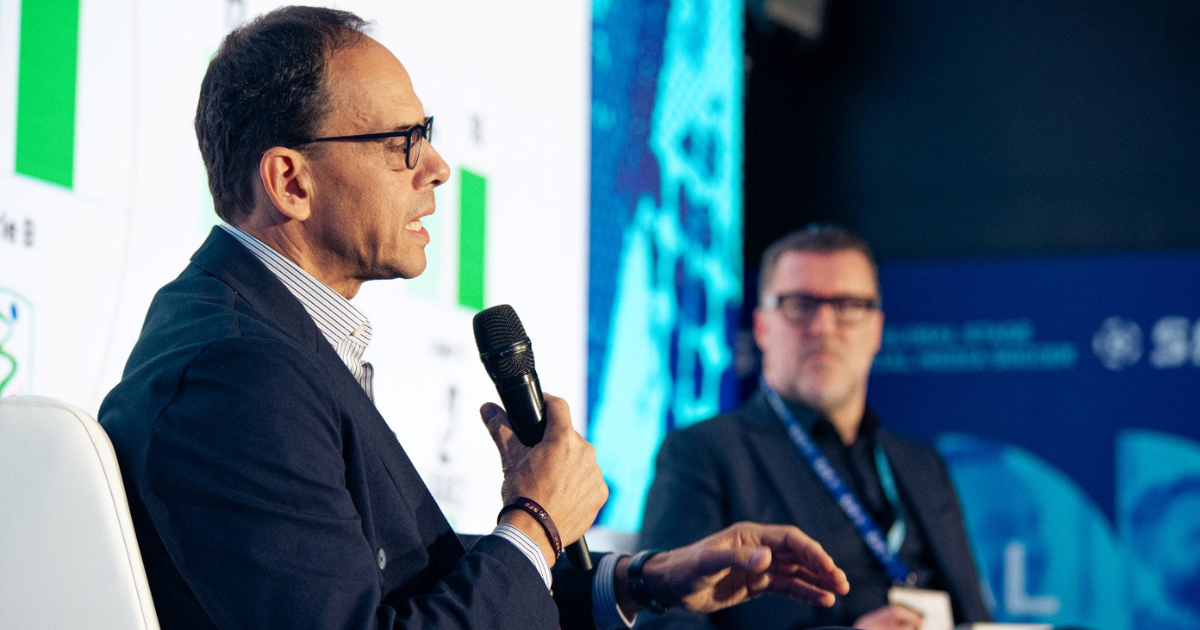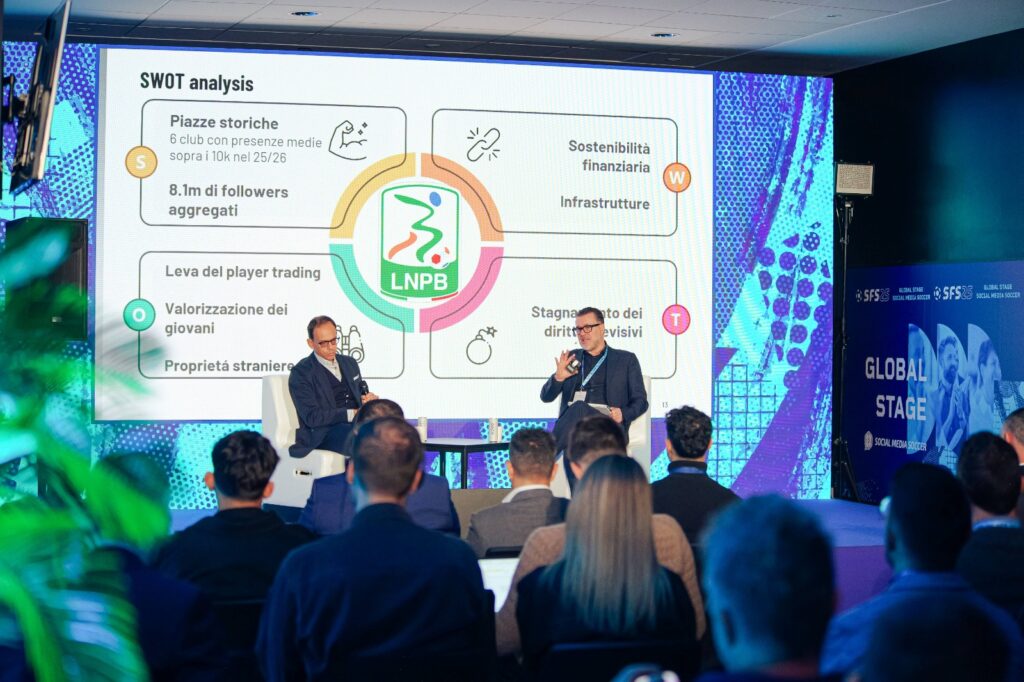
Sustainability, Talent, and Infrastructure: Serie BKT Between Financial Challenges and Product Appeal
During SFS 25, the panel dedicated to Sustainability, Talent Development, and Infrastructure unveiled the economic and structural dynamics of Serie BKT, highlighting critical issues alongside unique opportunities. The speech by Paolo Bedin, President of Lega Serie BKT, interviewed by Andrea Sartori, CEO of Football Benchmark and independent advisor to Lega B, provided a lucid overview of the need for a strategic shift for the entire football system and the Italian second division.
The financial challenge: economic data
Bedin opened the debate by emphasizing the economic differences that constrain Serie BKT compared to its European competitors. Leagues like the Bundesliga 2 (Germany) and the Championship (England) show a significant upgrade in operating revenues, on a path that has established them as leaders in Europe over the years thanks to an overall more robust revenue structure.
This unfavorable economic performance of Lega B, compared to its European competitors, largely stems from the lack of adequate and comparable internal solidarity principles (or principles of internal mutuality) and dynamics surrounding audiovisual rights that reflect the drastic contraction caused by the polarization of revenues toward major global and European competitions.
Infrastructure and risks
To this is added a chronic infrastructure deficit which has now become a competitive disadvantage. Bedin warned that the current crisis situation poses two synergistic risks: the unsustainability of economic-financial deficits on one hand, and a sort of barrier to entry for new ownership and investors, which would ensure the necessary renewal over the years.
The revenue ‘Precipice’ and costs
The revenue gaps characterizing the three divisions in Italy (Serie A, B, and C), which can be metaphorically represented more as a precipice rather than a step, necessitate intervention on the cost structure, primarily player costs. Players must be more involved in the club’s entrepreneurial risk, allowing clubs to have a sort of cushion in case of relegation from one category to another.
Clubs, defined as the pro tempore holders of the community’s heritage, require business continuity. And beyond history, connection to the territory, and brand, the only way to make them appealing to investors is economic-financial sustainability. This, however, clashes with the specific nature of the sector and the high team turnover (7 out of 20 teams each year), which hinders medium-to-long-term policies and adaptation to new regulatory standards.

Domestic talent: barriers and Player Trading
The analysis of Player Trading and talent management revealed certain imbalances. Although Serie BKT is among the top two European leagues for transfer market spending (after the Championship), the revenue generated is significantly lower, stopping at €5.3 million compared to the Championship’s €23.8 million. Furthermore, only 6% of Serie BKT players are sold to Serie A teams, a percentage that is continually decreasing compared to previous decades.
The causes certainly cannot be attributed to the quality or the technical/tactical level of our young players, which is high, as the regular successes of the FIGC youth national teams demonstrate. Moreover, the percentage of players called up to the Under 21 and Under 20 squads who come from Serie BKT is over 50%.
The reasons are attributable to a mix of factors: chronic “esterofilia” (a preference for foreign players) on one hand, which leads to the purchase of foreign athletes who generate appeal for fans; increased use of algorithms that monitor all global leagues; and last but not least, the domestic transfer management system through the so-called “clearing house” (stanza di compensazione), which imposes rigid financial guarantee obligations compared to international transfers.
The solutions involve increasing dialogue and seeking new forms of collaboration and transfer between domestic clubs to raise the flow of internal players, as well as strengthening the incentive mechanisms already highly structured in B for young players. It is worth noting that almost 60% of the League’s resources are already redistributed based on the minutes played by Under players, thereby rewarding the clubs that field them.
Development levers: infrastructure and data
The panel clearly identified two strategic levers for consolidating positive assets and reversing negative trends: infrastructure and TV/digital rights.
For infrastructure, requalification is necessary to maintain and strengthen fans’ enjoyment of live events on one hand, and to build club assets and generate new revenue streams on the other. The problem lies in the fact that the investment for building a new stadium is often a multiple of the investment required to manage the club, requiring an economic effort and capital expenditure that needs external help to standardize bureaucratic procedures, access to credit, and forms of financial support, making infrastructure a central priority.
Regarding television rights, Bedin emphasized the need for a transformation of the offering that embraces new OTT platforms and large digital groups. The goal is not to focus on revenue streams that are saturated or decreasing, such as those from classical platforms, but to aim for new content formats and the incremental value of data related to the league, matches, and data rooms—a challenge that the League and clubs must face at an associative level.
Territorial identity as an inimitable asset
Despite the challenges mentioned above, Serie BKT presents unique strengths upon which to build its future. The league has the smallest points difference between teams in Europe, a symptom of extraordinary technical balance. Attendance at the stadium is growing (120,000 season ticket holders and over 10,000 spectators per match), as is the digital fanbase, with 8.2 million aggregated followers: an online figure that is continually growing and evolving, a tangible demonstration of the sector’s opportunities.
The true strength is the sense of belonging and territorial identity that the fan feels deeply towards their city’s team, a bond that “emphasizes fan loyalty regardless of the team’s results.” In the entertainment sector, which is constantly growing and where the offering of sports and spectacle is very broad, the increase in spectators is an extremely positive and highly significant piece of data.
In conclusion, the discussion shifted to the topic of ownership. While the increasing arrival of foreign ownership is an important factor that ensures new investments but also needs to be analyzed and managed, there is also the need to re-engage and involve Italian ownership, motivating major Italian entrepreneurs linked to the territory and stakeholders to invest in our clubs.



